We may be compensated if you purchase through links on our website. Our team is committed to delivering honest, objective, and independent reviews on home products and services.
 level – 4-foot
level – 4-foot Hammer
Hammer Phillips screwdriver
Phillips screwdriver Tape measure
Tape measure Drill/driver
Drill/driver Stud finder
Stud finder drill bit – 1/8-inch
drill bit – 1/8-inch
Whether you’re looking to organize a cluttered office, showcase decor in your living room, or maximize space in a small bedroom, installing wall-mounted shelves is a project you can tackle in an afternoon.
This guide will walk you through the process, from selecting the right system to putting the finishing touches on your new shelves.
For other wall storage options, check out our instructions for How To Build Wall Cubbies.
Understanding Wall-Mounted Shelving Systems
There are several different types of wall-mounted shelves to choose from. Below, we’ll discuss some of the most popular options and their benefits.
Types of Wall-Mounted Shelves
Wall-mounted shelving systems come in various styles to suit different needs and decor. They include the following:
- Bracket and standard systems
- Built-in shelving units
- Decorative shelf brackets with wood planks
- Floating shelves
- Track-based shelves
Benefits of Wall-Mounted Shelves
Wall-mounted shelves offer several advantages over freestanding units, such as:
- Affordable: Compared to custom built-ins, wall-mounted shelves are a budget-friendly option.
- Customizable: You can adjust shelf height and placement to fit your needs.
- Easy to install: With the right tools and instructions, most homeowners can install them without professional help.
- Space-saving: They don’t take up floor space, making them ideal for small rooms.
- Versatile: They work well in any room, from kitchens to bedrooms.
Essential Tools and Materials for Installing Shelves
Here’s what you’ll need to install a basic bracket and standard shelving system.
Required Tools
- Drill with drill bits
- Hammer (optional)
- Level (4-foot recommended)
- Pencil
- Screwdriver
- Stud finder
- Tape measure
Necessary Materials
- Candle wax (optional for easier screw insertion)
- Screws (2 1/2-inch flathead wood screws for studs)
- Shelf brackets
- Shelf standards (twin-track recommended for heavier loads)
- Shelves (pre-cut or custom-sized)
- Wall anchors (if not hitting studs)
Preparing for Wall-Mounting Shelves
Proper preparation is key to a successful shelf installation. Take time to plan your project and consider the following factors.
Choosing the Right Location
Select a wall area that’s suitable for your shelving needs, including whether you need to build a shelf over a door. Consider the room’s layout, existing furniture, and how you’ll use the shelves. Avoid areas with obstacles like light switches or air vents.
Determining Shelf Weight Capacity
Calculate the expected weight of items you’ll store on the shelves. Doing so will help you choose the appropriate shelf and bracket system. Remember, the total weight capacity depends on both the shelves and the wall they’re mounted to.
Step 1: Project Overview
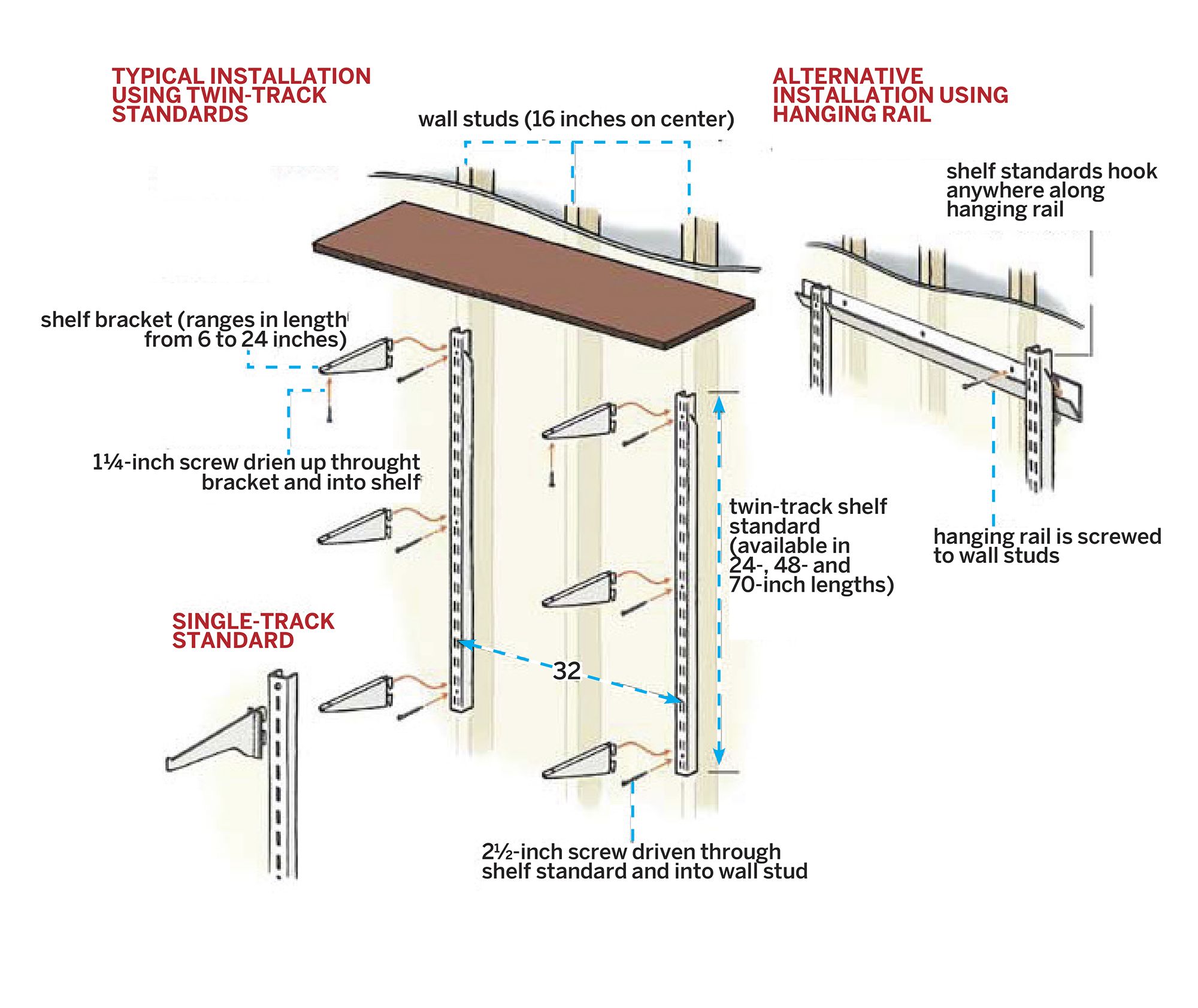
In this step-by-step, we chose twin-track standards, which take more weight than the single-track version, have brackets that screw to the shelving, and allow you to install standards 32 inches on center (every other stud, rather than every stud). However, if you can’t align the shelf standards with wall studs in every case, you can use hollow-wall anchors.
Step 2: Mark the Locations of the Wall Studs
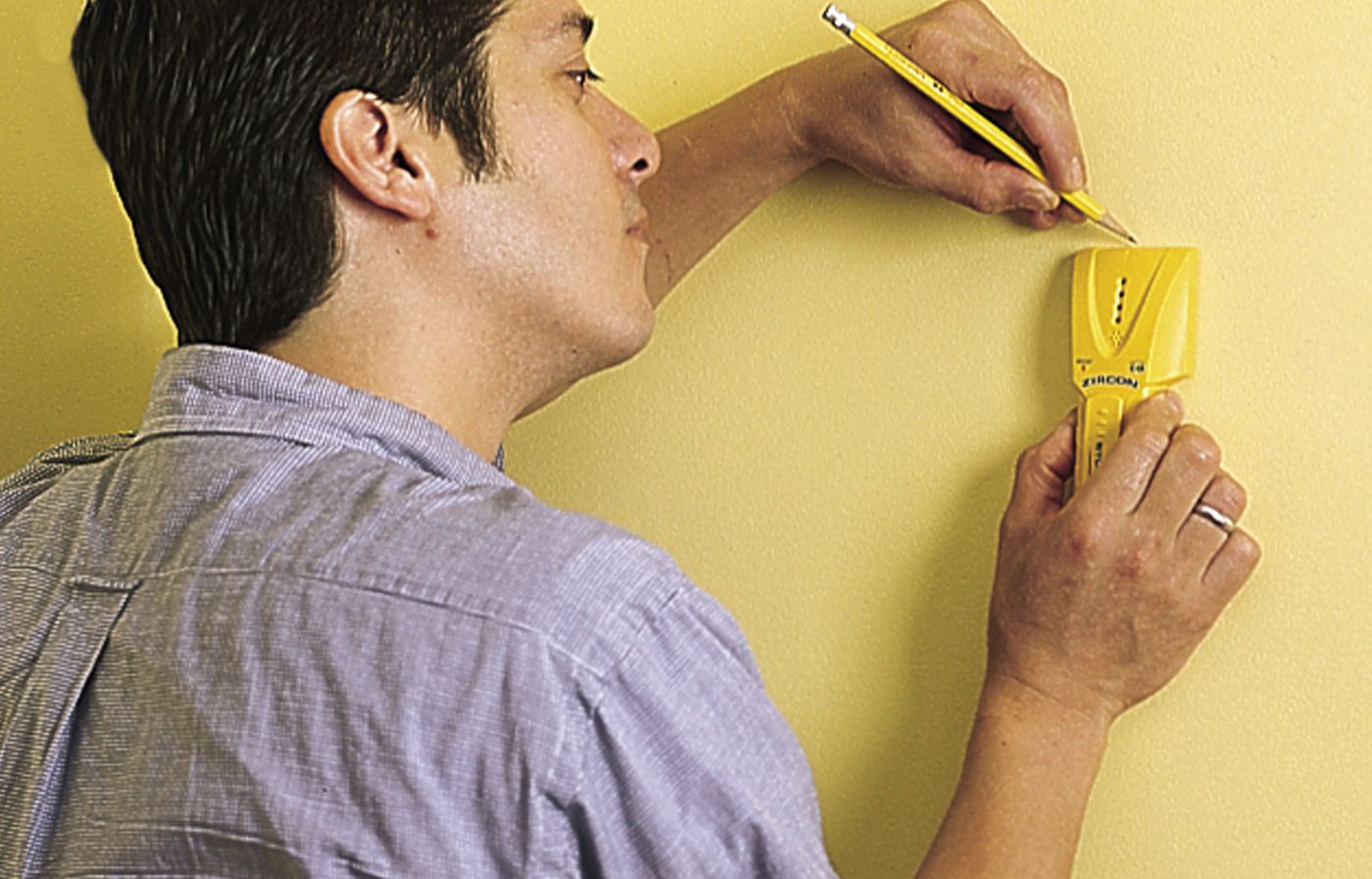
If you have drywall, locate the studs by sliding an electronic sensor along the wall until you hear a beep or see a red line indicating the stud’s edge. Mark this point in pencil.
Slide the stud finder in the opposite direction to find the stud’s other edge.
Move over 32 inches and repeat for the second standard.
If you have wood-lath plaster walls, use a stud sensor with a metal setting to pinpoint where the lath is nailed to the stud. If you have metal-lath plaster or don’t have a stud sensor, punch tiny holes with a finish nail along the wall until you hit a stud.
Tip: We recommend punching these holes along the baseboard, which makes the holes easier to hide.
Step 3: Drill Pilot Holes
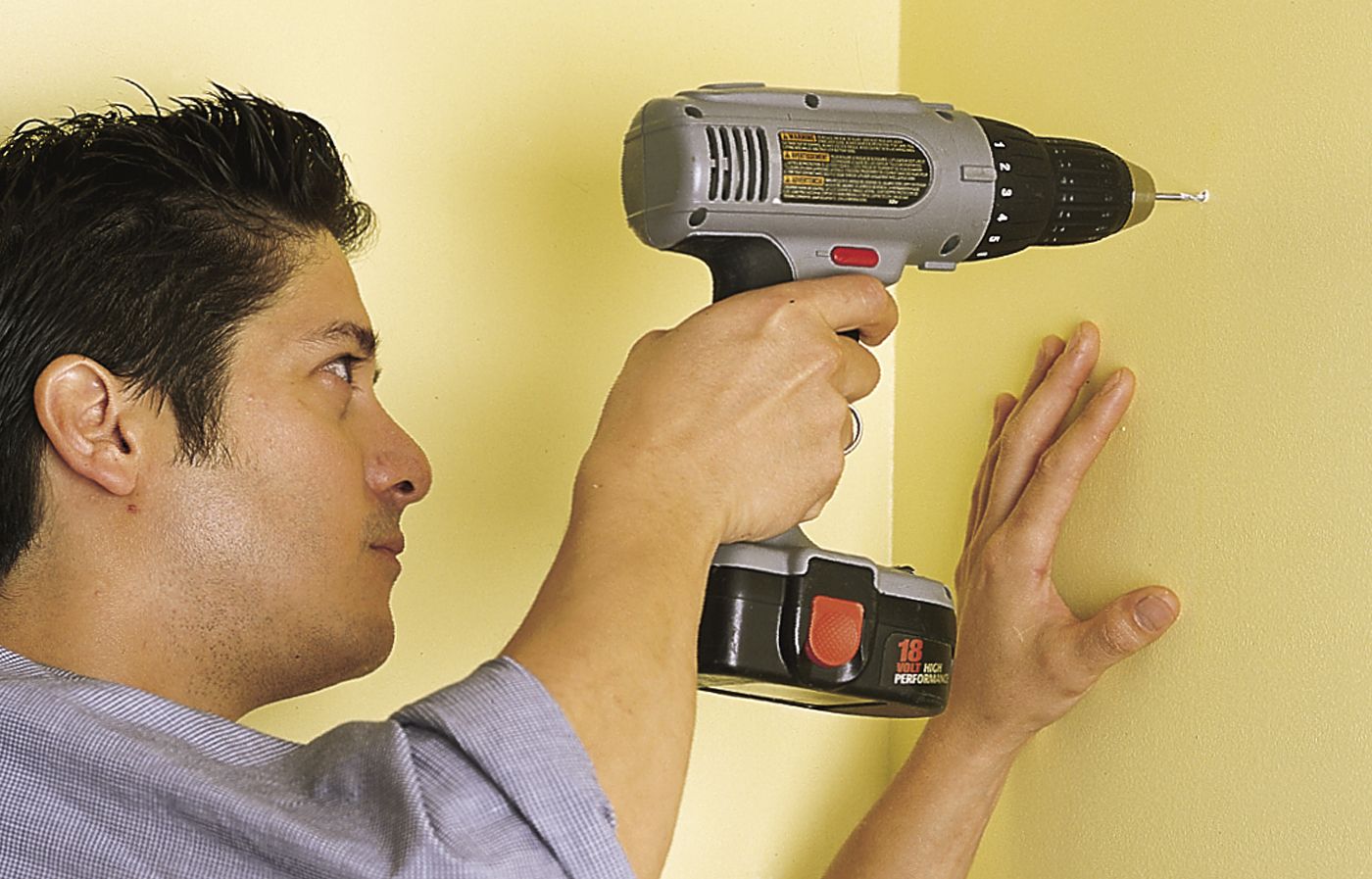
Hold one of the standards on the wall between the stud edge demarcations. Lightly mark where the top screw hole falls on the stud.
Bore a 1/8-inch-diameter screw pilot hole at the pencil mark, as shown above.
Step 4: Hang the First Shelf Standard
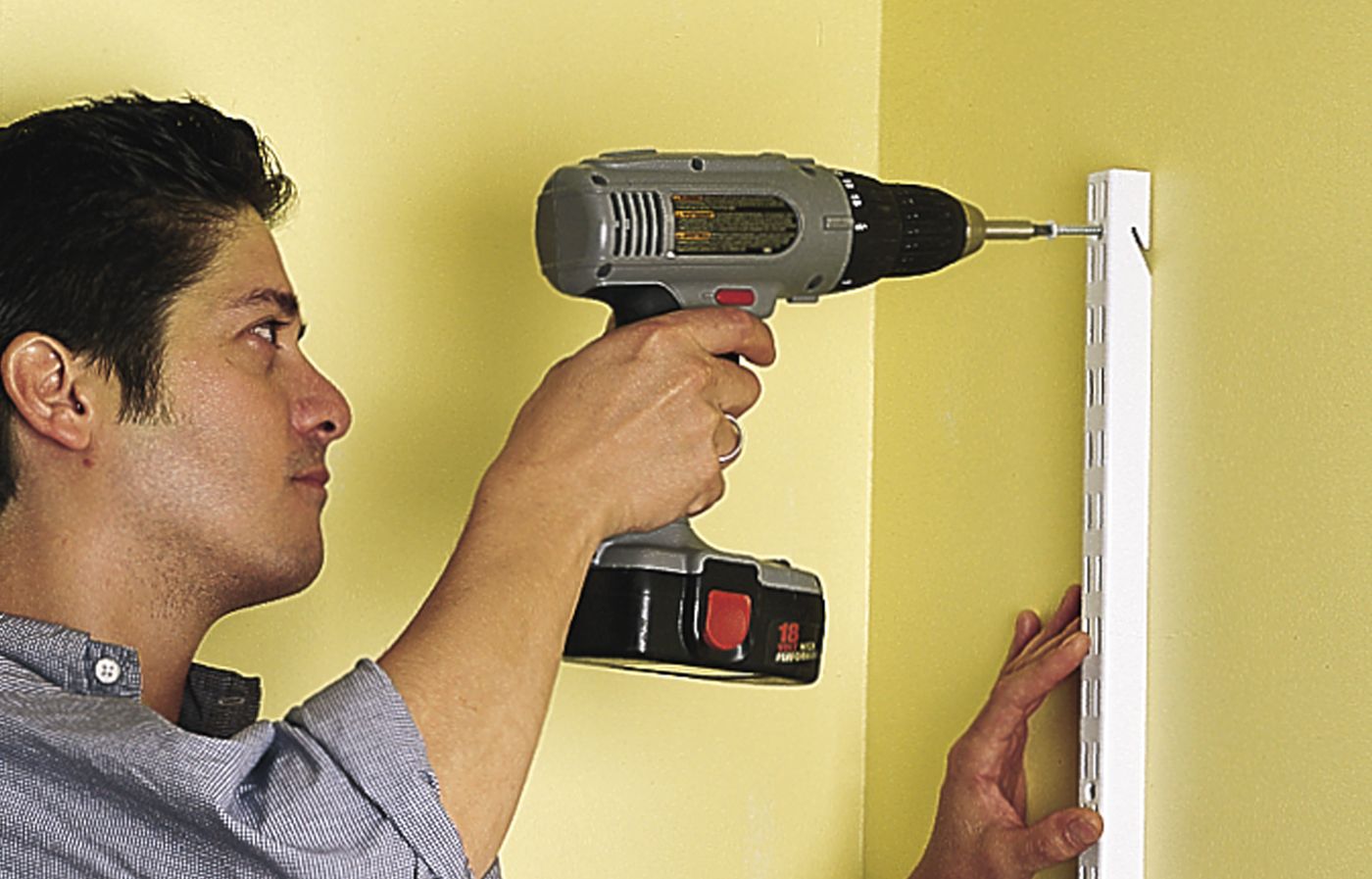
Hold the standard in place and drive a single 2 1/2-inch-long screw hole into the pilot hole (as shown above).
Be sure the screw is snug, but don’t overtighten it—the standard should hang freely straight down.
Tip: Rub candle wax onto the screws to make them go in faster and easier.
Step 5: Drive in the Bottom Screw
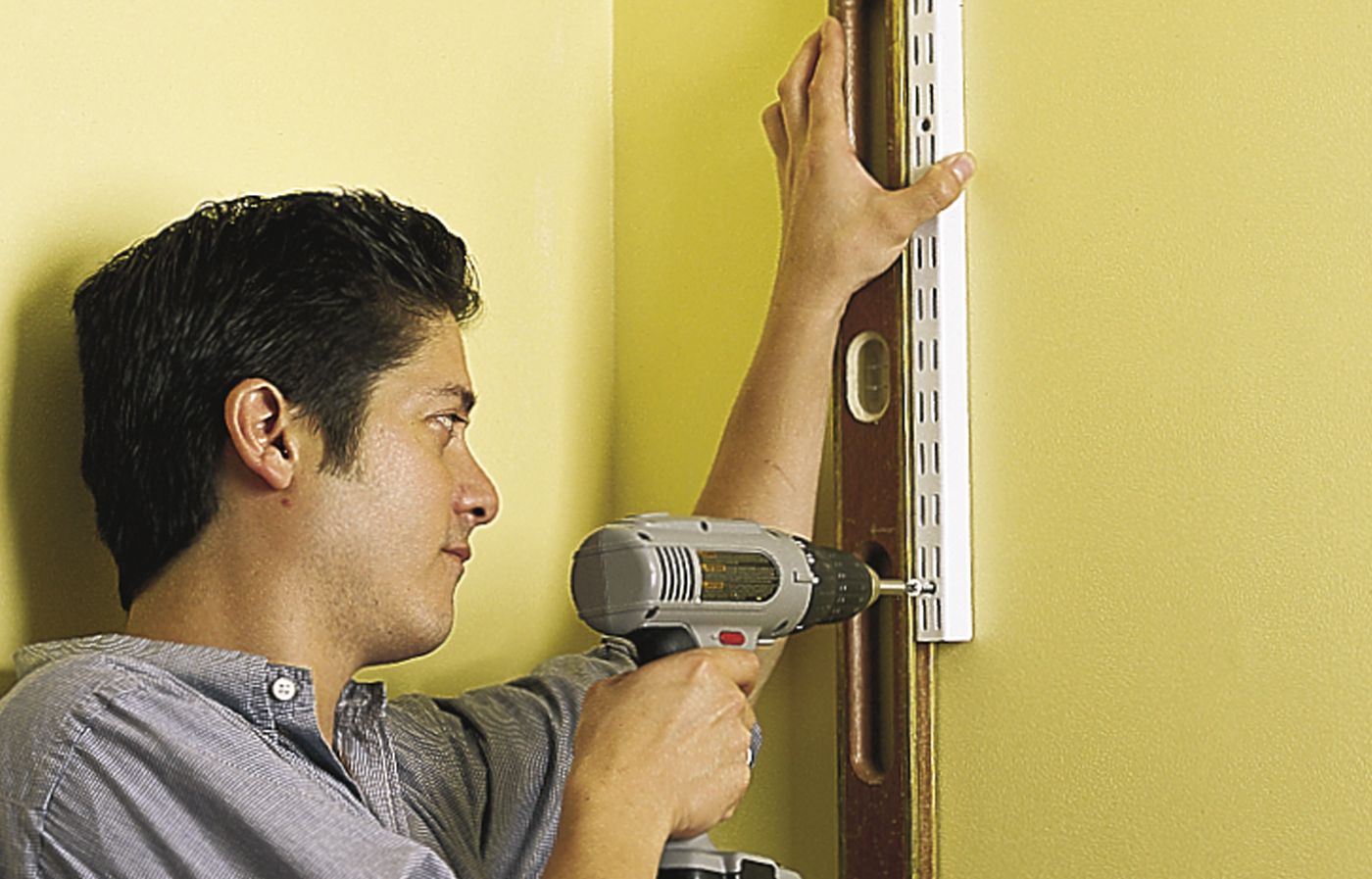
Hold a 4-foot level against the edge of the standard. Adjust it until the level reads plumb, vertically.
Bore a 1/8-inch-diameter screw pilot hole through the bottom screw hole in the standard.
Drive a 2 1/2-inch long flathead wood screw through the bottom screw hole (as shown).
Place screws in the standard’s remaining screw holes.
Step 6: Hang the Second Standard
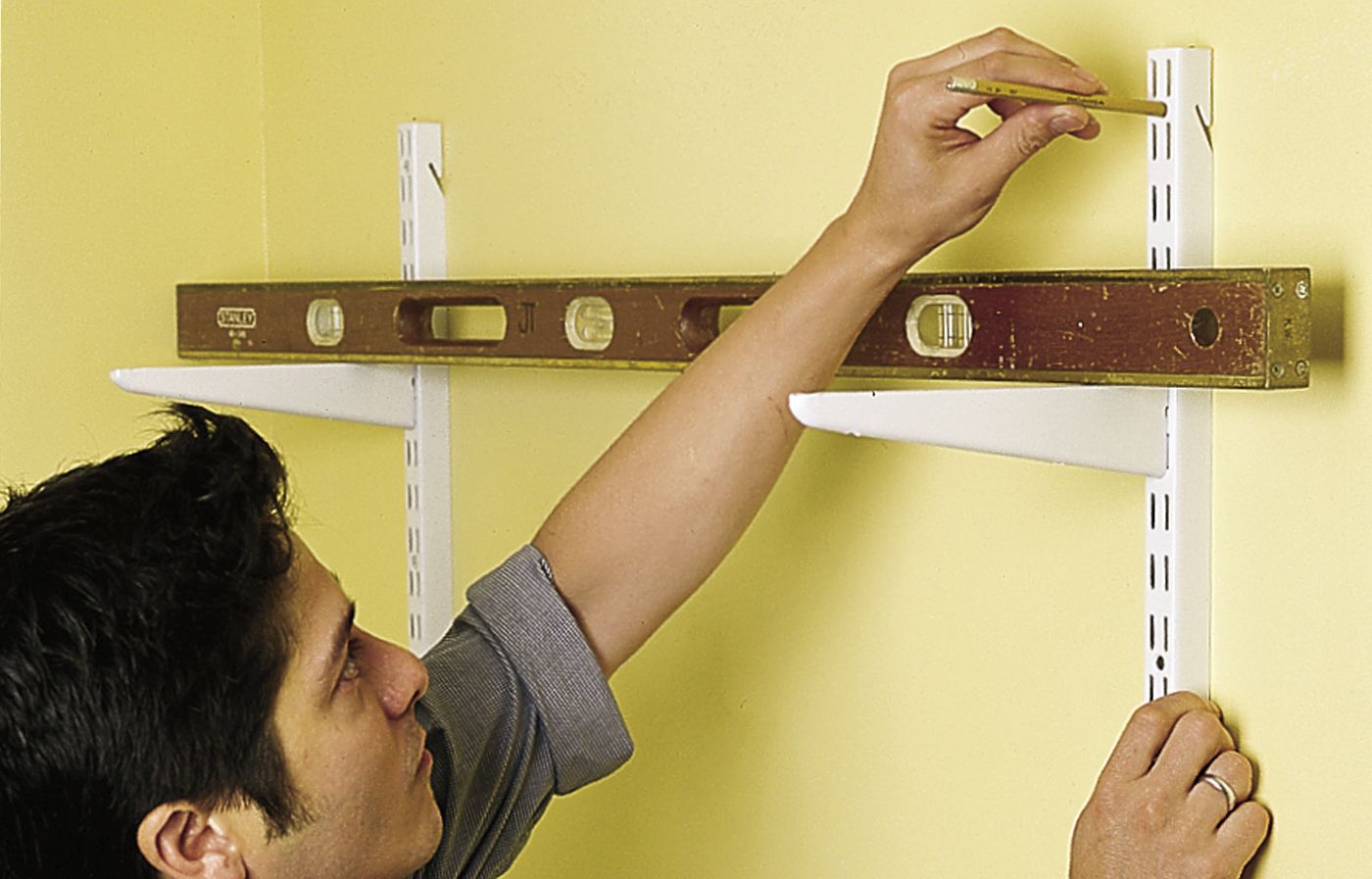
Hook a shelf bracket into each standard, placing opposing brackets at the same level.
Hold the second standard against the wall, centering it on the stud 32 inches away.
Lay a 4-foot level across the two brackets, then raise or lower the unsecured standard until it’s level with the first. Mark the top screw hole location, as shown.
Fasten the standard to the wall following Steps 3 and 4.
Tip: If you intend the shelf to hold a heavy load, add a third support standard in the center, spacing it 16 inches between the stud-mounted standards.
Step 7: Install the Shelves
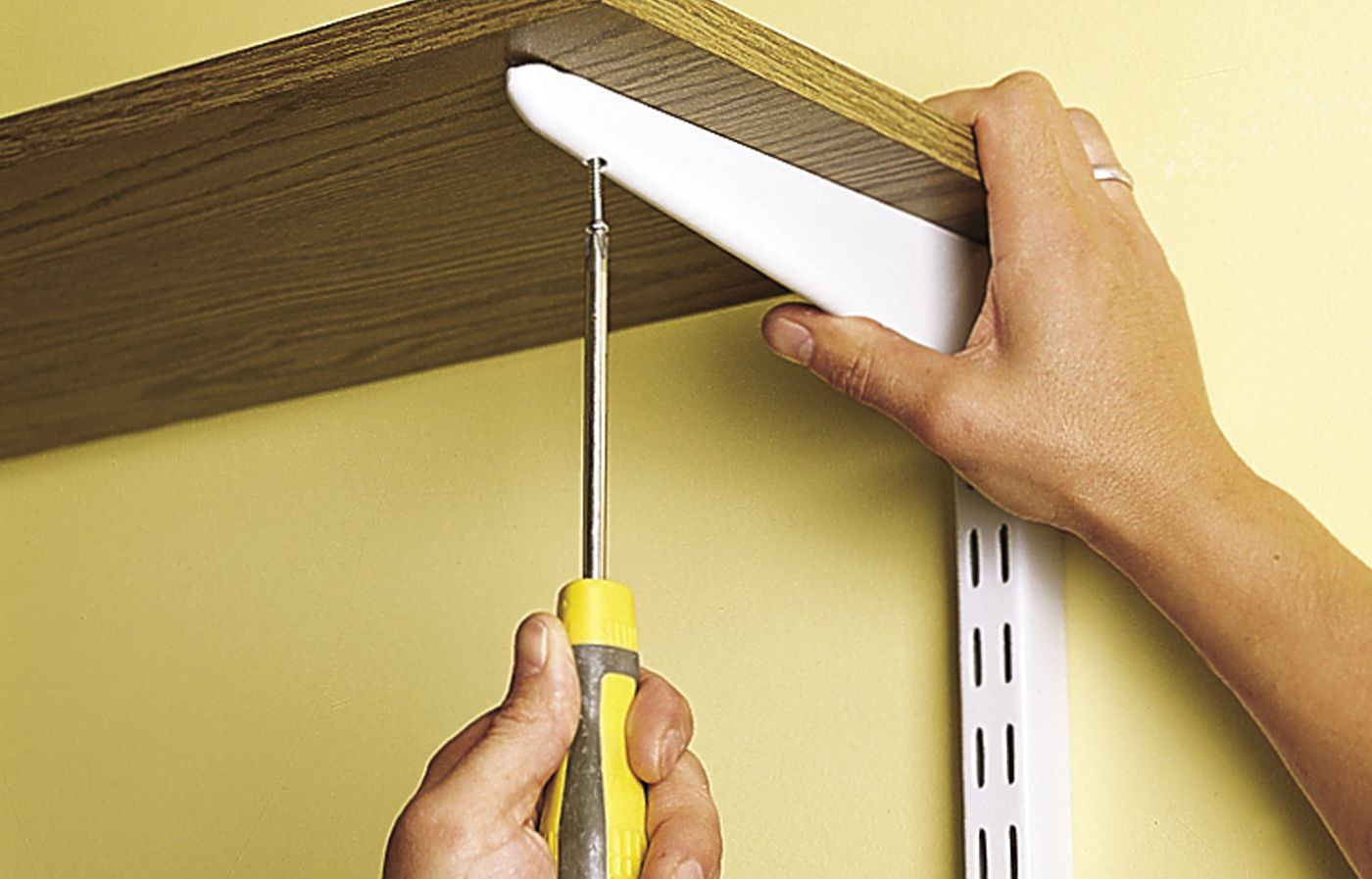
Attach the remaining pairs of brackets.
Slide the shelves onto the brackets and bore a ⅛-inch-diameter hole through the front of the bracket at the small mounting hole. Drill about halfway through the bottom of the shelf, taking care not to drill through it completely.
While holding the shelf down, drive a 1 1/4-inch-long flathead wood screw up through the bracket and into the shelf, as shown above.
Repeat this step to secure the remaining shelves.
Tips for Installing Shelves in Different Wall Types
While the basic installation process is similar, different wall materials may require specific techniques or hardware.
Drywall Installation Techniques
When installing shelves on drywall without hitting studs, make sure you do the following:
- Use toggle bolts or molly bolts for added strength.
- Spread the load by using more standards and brackets.
- Consider using a backer board attached to studs for extra support.
Masonry Wall Considerations
For brick or concrete walls:
- Use a masonry bit to drill pilot holes.
- Insert plastic anchors or lead anchors before screwing in standards.
- Consider using a hammer drill for easier installation in hard surfaces.
Adjusting and Leveling Your Wall-Mounted Shelves
After installation, level your shelves by performing the following steps:
- Use a level to check each shelf’s horizontal alignment.
- Adjust bracket positions if necessary.
- Add shims behind standards if walls are uneven.
- Test stability by gently pressing down on each shelf.
Troubleshooting Common Shelf Installation Issues
Even with careful planning, you might encounter some challenges. Here’s how to address them.
Ealing With Uneven Walls
- Use shims behind standards to create a level surface.
- Consider using adjustable brackets that allow for minor tweaks.
- In extreme cases, install a mounting board to create a flat surface for standards.
Fixing Loose or Wobbly Shelves
- Tighten all screws in standards and brackets.
- Check that shelves are properly secured to brackets.
- Add additional support brackets if needed.
- Replace any damaged components.
Maintaining Your Wall-Mounted Shelves
Regular maintenance helps your shelves remain safe and organized for years to come.
Regular Cleaning and Inspection
- Dust shelves and items regularly.
- Periodically check for loose screws or brackets.
- Inspect the wall around standards for any signs of stress or damage.
When To Tighten or Replace Components
- Tighten the screws if you notice any wobbling or movement.
- Replace brackets if they show signs of bending or wear.
- Consider upgrading to a more robust system if you consistently overload the shelves.
Our Conclusion
Installing wall-mounted shelves is a relatively simple do-it-yourself project that can quickly transform the functionality and appearance of any room without the commitment of installing knee-wall storage. With the right tools, materials, and techniques, you can create a custom storage system that meets your specific purposes and complements your home’s appearance.








